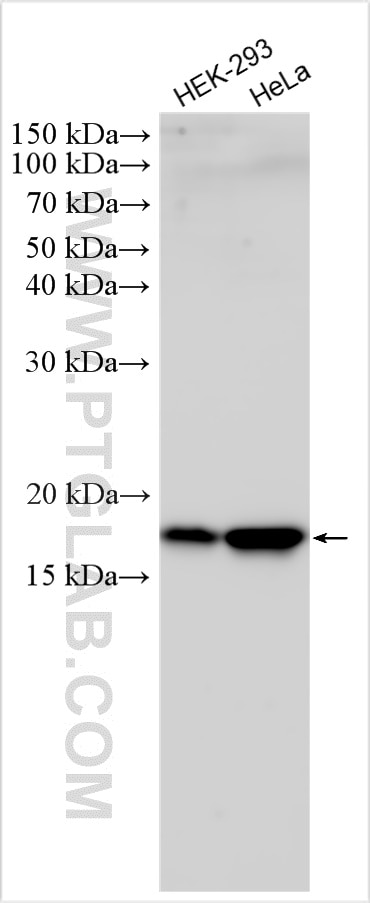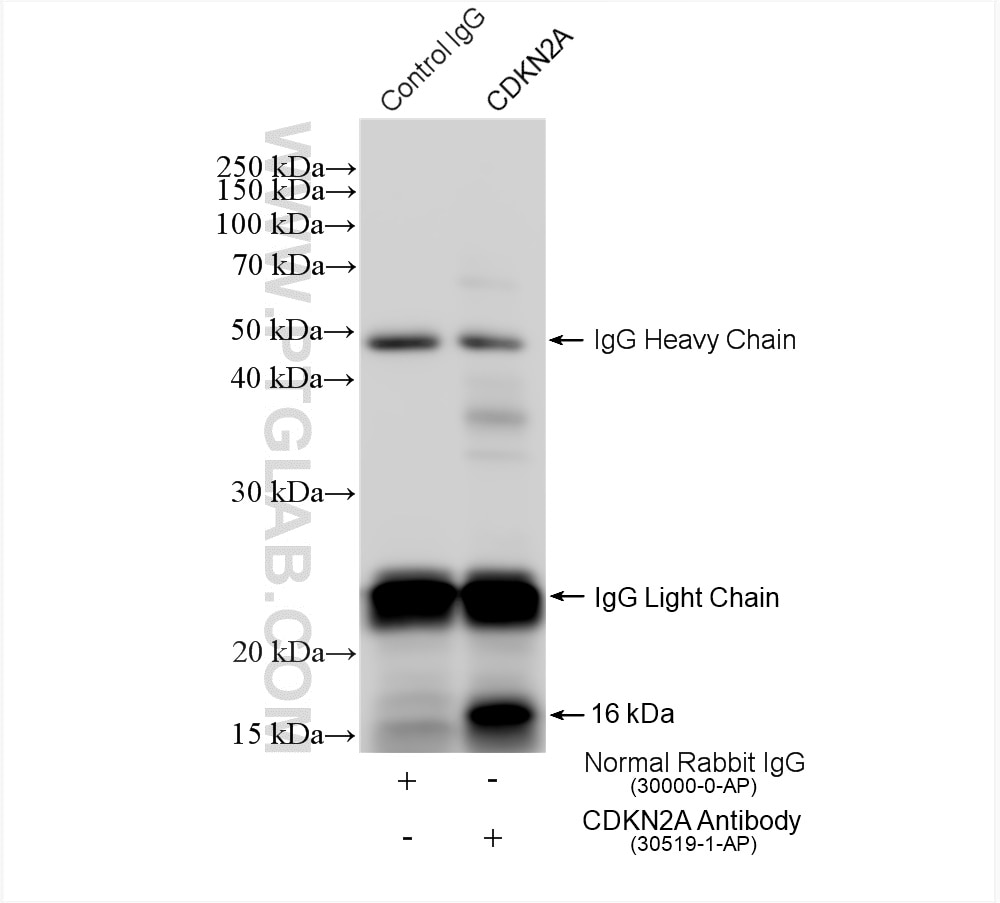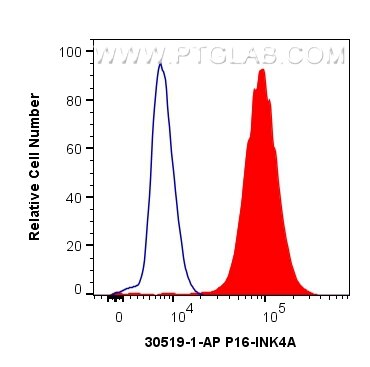Anticorps Polyclonal de lapin anti-CDKN2A/P16-INK4A
CDKN2A/P16-INK4A Polyclonal Antibody for WB, FC (Intra), IP, ELISA
Hôte / Isotype
Lapin / IgG
Réactivité testée
Humain
Applications
WB, IHC, FC (Intra), IP, ELISA
Conjugaison
Non conjugué
N° de cat : 30519-1-AP
Synonymes
Galerie de données de validation
Applications testées
| Résultats positifs en WB | cellules HEK-293, cellules HeLa |
| Résultats positifs en IP | cellules HEK-293, |
| Résultats positifs en FC (Intra) | cellules HeLa, |
Dilution recommandée
| Application | Dilution |
|---|---|
| Western Blot (WB) | WB : 1:1000-1:6000 |
| Immunoprécipitation (IP) | IP : 0.5-4.0 ug for 1.0-3.0 mg of total protein lysate |
| Flow Cytometry (FC) (INTRA) | FC (INTRA) : 0.80 ug per 10^6 cells in a 100 µl suspension |
| It is recommended that this reagent should be titrated in each testing system to obtain optimal results. | |
| Sample-dependent, check data in validation data gallery | |
Applications publiées
| WB | See 3 publications below |
| IHC | See 1 publications below |
Informations sur le produit
30519-1-AP cible CDKN2A/P16-INK4A dans les applications de WB, IHC, FC (Intra), IP, ELISA et montre une réactivité avec des échantillons Humain
| Réactivité | Humain |
| Réactivité citée | Humain |
| Hôte / Isotype | Lapin / IgG |
| Clonalité | Polyclonal |
| Type | Anticorps |
| Immunogène | CDKN2A/P16-INK4A Protéine recombinante Ag29567 |
| Nom complet | cyclin-dependent kinase inhibitor 2A |
| Masse moléculaire calculée | 17 kDa |
| Poids moléculaire observé | 16 kDa |
| Numéro d’acquisition GenBank | NM_000077 |
| Symbole du gène | CDKN2A |
| Identification du gène (NCBI) | 1029 |
| Conjugaison | Non conjugué |
| Forme | Liquide |
| Méthode de purification | Purification par affinité contre l'antigène |
| Tampon de stockage | PBS with 0.02% sodium azide and 50% glycerol |
| Conditions de stockage | Stocker à -20°C. Stable pendant un an après l'expédition. L'aliquotage n'est pas nécessaire pour le stockage à -20oC Les 20ul contiennent 0,1% de BSA. |
Informations générales
P16-INK4A is also named as CDKN2A, MLM, Tumor suppressor ARF, Alternative reading frame. The tumor suppressor protein p16Ink4a (encoded from the CDKN2A locus) is often transcriptionally activated in cells undergoing senescence and is one of the main regulators of this program, and it is upregulated in multiple tissues during aging (PMID:17055429). p16-Ink4a is the principal member of the Ink4 family of CDK inhibitors. p16-Ink4a contributes to the regulation of cell cycle progression by inhibiting the S phase. p16Ink4a binds to CDK4/6, inhibiting cyclin D-CDK4/6 complex formation and CDK4/6-mediated phosphorylation of Rb family members. Expression of p16-Ink4a maintains the Rb family members in a hypophosphorylated state, which promotes binding to E2F1 and leads to G1 cell cycle arrest (PMID: 21297668).
Protocole
| Product Specific Protocols | |
|---|---|
| WB protocol for CDKN2A/P16-INK4A antibody 30519-1-AP | Download protocol |
| IP protocol for CDKN2A/P16-INK4A antibody 30519-1-AP | Download protocol |
| Standard Protocols | |
|---|---|
| Click here to view our Standard Protocols |
Publications
| Species | Application | Title |
|---|---|---|
Biochim Biophys Acta Mol Cell Res Suppression of GATA3 promotes epithelial-mesenchymal transition and simultaneous cellular senescence in human extravillous trophoblasts | ||
Aging Cell Identifying ENO1 as a protein target of chlorogenic acid to inhibit cellular senescence and prevent skin photoaging in mice | ||
Tissue Cell Molecular changes of cellular senescence in dental pulp stem cells during in vitro culture: A potential role of PSG4 | ||
Front Aging Tissue-specific effects of bacterial PncA overexpression on NAD+ metabolism and aging in mice: implications for tissue-specific aging interventions |




